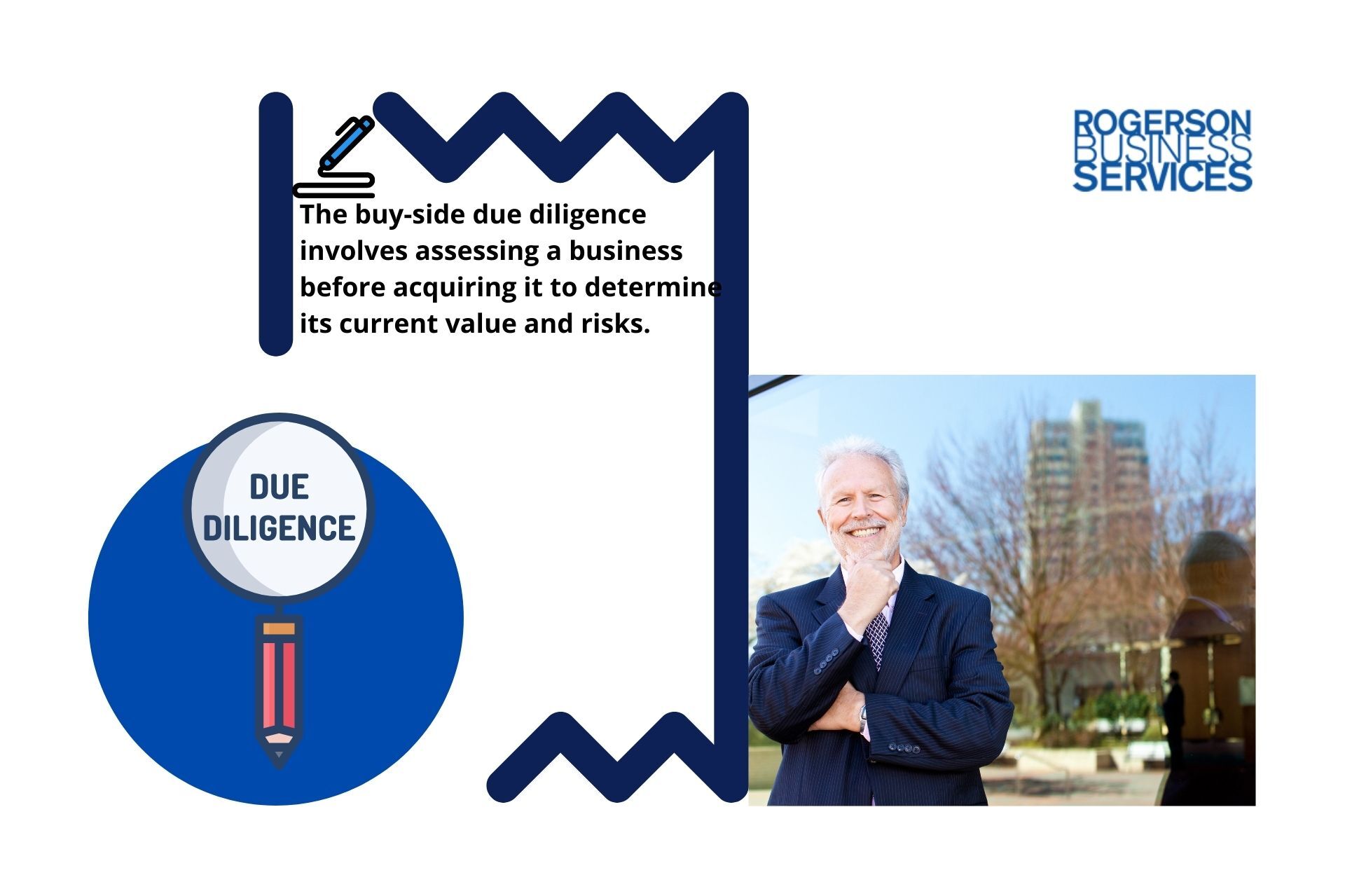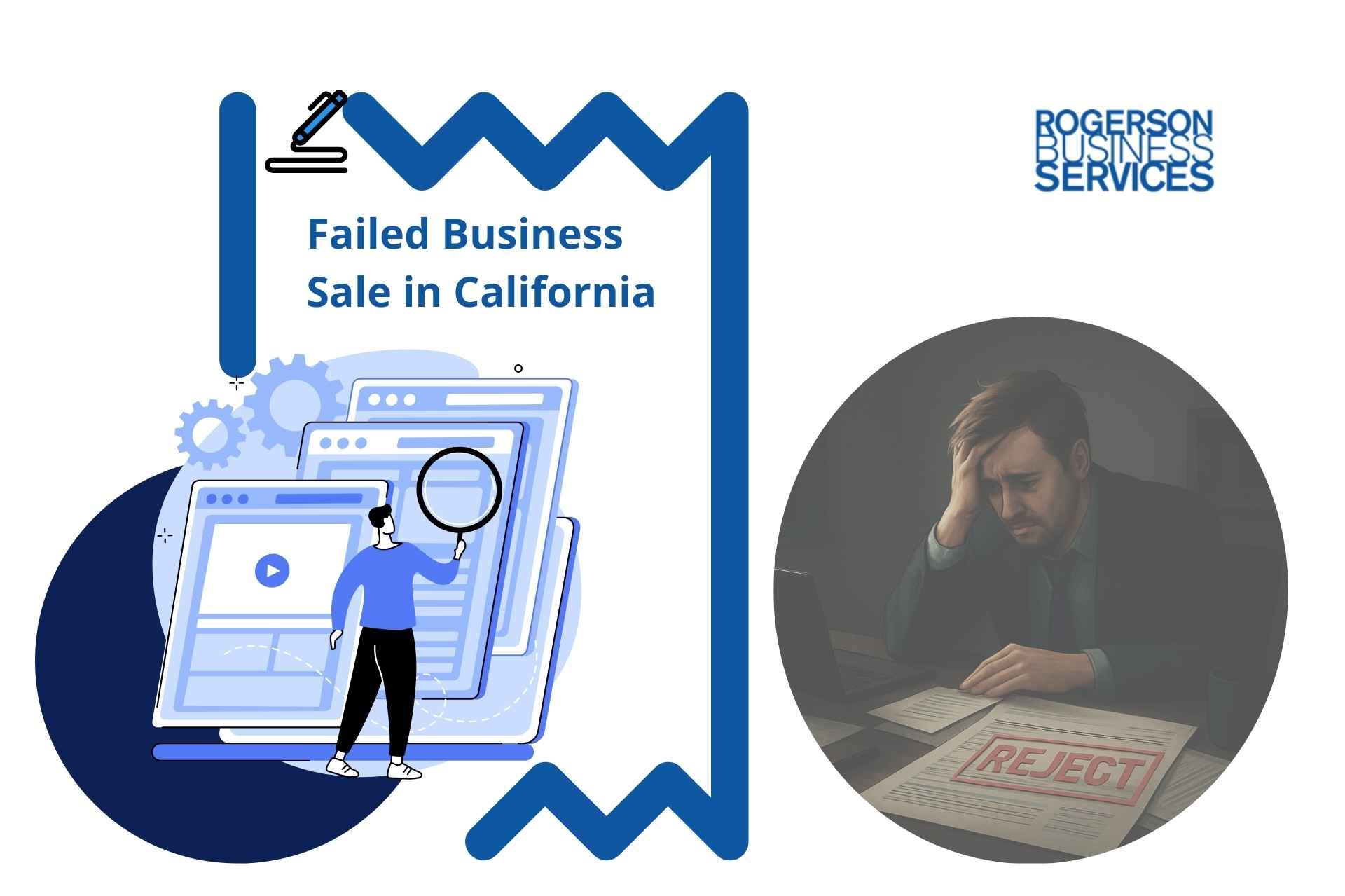Buy-Side vs Sell-Side Due Diligence | Lower Middle Market Businesses
Buy Side vs Sell Side Due Diligence

Any entrepreneur planning to sell their lower middle market business in California ought to know the intricacies and implications of the sell-side vs. buy-side due diligence.
Let’s answer the question, ‘What is the difference between the buy-side and sell-side due diligence?’
Buy-Side
As an investor looking for a good acquisition, finding an investment that meets your objectives and buying price is imperative.
Thus, proper due diligence analysis on the potential acquisition is integral because it depicts whether you should continue with the purchase or discard it. For instance, conducting various financial analyses as part of the due diligence aids in knowing the potential investment’s working capital, liabilities, assets, and cash flow.
As such, buy-side due diligence involves assessing a business before acquiring it to determine its current value and risks.
Additionally, buy-side due diligence aids the buyer in adapting to the company after the acquisition. In an example of a sell-side due diligence report, the buyer will understand the company’s driving factors, which helps them make decisions that impact the business’s success.
Ultimately, having a holistic understanding of the company’s operations increases one’s chances of a successful transaction.
Here is a list of the standard buy-side due diligence that investors perform when acquiring a business:
- Taking the assessment seriously.
- Having sufficient members in the due diligence team.
- Having a diverse group.
- Confidentiality.
- Having the right checklist.
- Presenting a good report.
- Maintaining effective communication.
- Minimizing communication breakdown.
- Differentiating risk and opportunity.
- Preparing for the “post-close” period.
Sell-Side
The primary goal of most sellers is to close a deal at the highest price. Unfortunately, most sellers do not know what is sell-side due diligence. Sellers should conduct sell-side due diligence to identify various issues that affect the business to mitigate them before closing the sale.
For instance, the sell-side due diligence report will depict various financial risks that the seller must manage to ensure they do not affect the original price during the negotiations.
Here are the steps of the sell-side due diligence process:
- Establishing a motive- It entails knowing the main reason for selling your business. For instance, if your primary motive for selling your business is because it is at the top of the market, this motive will guide you when establishing a reasonable price.
- Evaluating your finances- It involves checking whether the business has a solid financial structure. For example, one should assess the company's credit history to identify any cash flow issues.
- Certifying the business is sustainable- It entails determining whether the business can sustain itself and if it has the potential to grow. For instance, you should evaluate the company's ability to acquire various assets imperative to its growth.
- Upholding transparency- It involves having a transparent and honest approach when evaluating your organization’s financials. For instance, suppose your company is struggling. You must be transparent about this issue when conducting due diligence to formulate ways to curb it.
M&A Due Diligence
Due diligence in M&A is a crucial procedure that lets buyers confirm details on the seller’s finances, target base, and contracts. On the other hand, sellers’ primary role is to prove they are trustworthy.
Thus, it allows both parties to make informed decisions enhancing their chances of success.
Thus, due to the intricate nature of the dealings, the following is a list of significant due diligence activities undertaken in a typical M&A transaction:
- Target company summary.
- Financial matters overview.
- Quality of technology/intellectual property.
- Target customer base.
- Strategic fit of the company to the buyer’s business.
- Reviewing material contracts.
- Company’s management/staff base.
- Legal issues overview.
- Cybersecurity.
- Tax matters.
- Review of insurance policies.
- Review of production capabilities.
- Review of marketing strategies.
- Analyzing potential environmental issues.
For a smooth due diligence process, ensure you follow these tips:
- Ensure there is an alignment of needs with key stakeholders.
- Set value and time expectations to improve the outcomes.
- As the client, gather significant information on the seller’s company.
- Ensure there is communication between you and the seller.
- Set rules within the business process.
Additionally, the due diligence process allows the purchaser to recognize and assess potential business risks and liabilities before completing the transaction.
Business Due Diligence Checklist
Each M&A business deal is unique from the other. Thus, regarding the dynamics and needs of the business deal, including expansion, buying a new company, or acquiring a new product to add to your business, below is a checklist to assist you through the process.
- Conduct monetary due diligence: This step allows you to look into the company’s tax, sales, and projections assessing the business’s economic situation.
It also allows you to review the balance sheets, income, and cash flow statements, profits, return on investments, and accounts affiliated with the company and assess the past and future sales projections.
- Conduct a legal, due diligence assessment: This allows you to evaluate copies of legal documents and contracts affiliated with the seller.
They may include sales contracts, purchase and distribution agreements, property leases, staff and contractor agreements, business registration and license documents, and patents. This step allows you to look into any legal issues, lawsuits, or risks involving the business.
- Review and verify business operations: Here, you can investigate the company’s operations, including the competition, marketing trends, and potential future earnings.
- Review and verify workers’ information: You can ask for the staff and organizational charts and assess their responsibilities. During this time, you have the chance to find out if any of the workers plan to quit, if the sale occurs, and what incentives you may provide to retain them.
- Conduct a customer base assessment: You can review all customer databases and determine how many clients the business has acquired and retained.
- Conduct products and services due diligence: This step allows you to assess the company’s products and services and ways to improve their production.
As a transacting party, you need a due diligence checklist for selling a business because:
- You can find out whether the company is a good investment.
- It allows you to assess the liability and issues associated with the contracts.
- It enables you to measure the cost of integration and potential proceeds.
Due Diligence Documents in M&A
Due diligence documents are audits and reviews that illustrate and confirm details required on the organization pending a business transaction. They allow the buyer to verify relevant information about the seller.
These documents include:
- Legal documents: They include business licenses, tax registrations, building permits, and power of attorney contracts.
- Sales and Marketing Records: List of suppliers, detailed sales and marketing strategies, customer’s credit terms, and revenue lists
- Employee documents: They include detailed staff contracts, a list of current staff and contractors, clear staff policies and laws, and employee résumés.
- Contract documents: They comprise consumer and supplier contracts, partnership and settlement agreements, loans and guarantees, and equipment leases.
- The business’s good standing documents: Common documents include minutes book, organizational charts, status reports, articles of incorporation, and the company’s bylaws and amendments.
Conclusion
Do not shy away from seeking sell-side advisors when conducting sell-side due diligence if you consider selling your business. They may benefit you exponentially by:
- Helping you identify potential buyers.
- Advising and guiding you in preparation for the sale.
- Assisting with the sales negotiations and terms of the deal.
Overall, these advisors help maximize the value of your business and heighten the chances of a successful sale.
If you have decided to value and then sell your lower middle market business now or within the next six to twelve months in California, click here to get started with this quick and simple form, or call Andrew Rogerson, Certified M&A Advisor, so we can understand your pain points better and prioritize your inquiry with Rogerson Business Services, RBS Advisors.
This is part of business owner tips to answer how Rogerson Business Services attract qualified buyers to sell your business series ->
Hey there! Can we send you a gift?
We just wanted to say hi and thanks for stopping by our little corner of the web. :) we'd love to offer you a cup of coffee/tea, but, alas, this is the Internet.
However, we think you'll love our email newsletter about building value and properly position your company before transition/exit your business ownership.
As a special welcome gift for subscribing, you'll also get our helping and educational guides, tips, tutorials, etc.. for free.
It's filled with the best practices for retiring serial business owners like Dan Gilbert, Larry Ellison, Warren Buffett, and many more.
Just sign up for our emails below.


